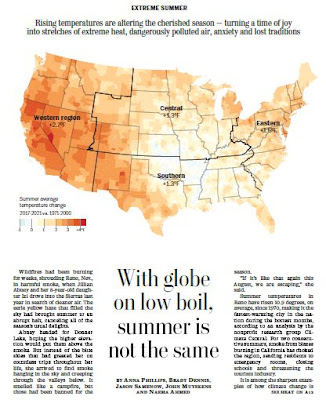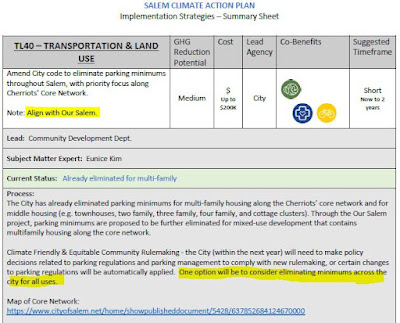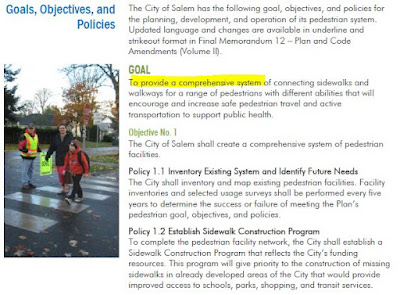The Climate Action Plan Committee meeting originally scheduled for July 6th has been postponed to Monday, July 11th. They'll be focusing on transportation and land use this month.
 |
| LA Times, Sunday front page |
First, though, let's take a brief detour to the newly amended infrastructure bond proposal. The City sent out a press release on Friday.
 |
| From the Friday press release |
On the one hand, the Davis Road and Union Street projects are valuable, not bad ideas at all. (But again, Union Street is a restoration of a segment that had been cancelled, not some new expansion, and we should not oversell its significance as a new thing.)
But the "careful trimming" the City praises exemplifies the way we largely keep auto capacity untouched and instead cannibalize from other valuable walking and biking projects. Non-auto transport is still fighting over table scraps. Council and Staff funded the new inclusions with these deletions:
- $450,000 by eliminating railing replacement from the 15th Street Bridge improvement (structural improvements will continue at $460,000)
- $1.5 million from sidewalk infill
- $1.29 million from sidewalk replacement
- $3.96 million from Safe Pedestrian Crossings
The only time car capacity was touched is "$1.1 million by eliminating right turn lanes from the State Street Project."
The approach to the bond - for the next decade, very nearly the period over which we are supposed to reduce our emissions by 50% in 2035, it must be stressed - does not adequately respond to our climate crisis and the need to reduce emissions from driving.
 |
| "Complete Salem's sidewalk network" - TL03 |
After all, the Climate Action Plan says to "complete Salem's sidewalk network." We should be doing as much expansion of sidewalk and bike lane as we possibly can, not deleting some sidewalk and bike lane to fund other sidewalk and bike lane. These kinds of projects need to be additive. It should be more, more, more, not "balance." Even when there are other funding sources available, "new grant sources," we should push for the maximum on these, not retreat to a false sense of balance.
Later there will be more to say specifically about the bond. The press release at the end says "Read detailed information about the Salem Community Improvement Bond," but that web page has not been updated, and still seems to reflect the concept outline from April. It's not actually detailed and current. So at the moment it does not seem possible to speak very closely and clearly to the proposed bond.
 |
| Washington Post, Sunday front page |
As we see with the sidewalk deletions, the bond isn't very well integrated into the Climate Action plan. There is, in fact, a weird theme of "alignment" and passivity in the prospective actions to discussed under agenda item 4, on transportation, at the Climate Action Plan Committee.
 |
| July agenda |
On the one hand, making sure the policy actions recommended by the climate plan aligns with other plans is a trivial element of mutual conformance. The multiple plans should be consistent and aligned.
 |
| Alignment theme on TSP - TL19 |
But what is really happening, on the other hand, is that the Climate Plan concepts are being watered down in order to accommodate and align with the weakened concepts in Our Salem and other plans. This is a kind of passiveness and conformity, trying to fit in and not make waves.
And where there are stronger requirements, as seems likely with the Climate Friendly and Equitable Communities rulemaking at the State level, from outside our own process, our Climate Action Plan is going to follow, not lead. (See briefly from May on the CFEC here and here.)
Consistently the Climate Action Plan concepts are framed up as aligning with the demands and standards of other projects. In other words, the Climate Action Plan is wholly in a secondary and subordinate position, always following the lead of other plans, and never primary, never driving action in those other plans.
 |
| On setbacks - TL39 |
 |
| On parking - TL40 |
Generally we are doing the least amount possible, and the Climate Action Plan is just too accommodating. It's too passive.
 |
| Our Salem is a rounding error on emissions Nowhere near the 50% reduction we need |
When we say that our Climate Action Plan will align with Our Salem and other plans, we are generally saying we will fail to meet the goals of our Climate Action Plan.
One thing that might strengthen this current phase is for the one-page summaries of each strategy to include more detail on how it fits into the whole.
 |
| What will we do with an updated TSP? |
The summaries treat each task and strategy as a discrete and sufficient end, but do not discuss how they fit with other tasks and strategies. Here, for example, updating the TSP is important, but it is merely an instrumental task, perhaps necessary, but not at all sufficient. Updating the TSP itself does not change any of our transportation system and does not reduce any emissions. It is words on paper only, a dead letter, if not accompanied by a strategy to fund and construct the projects enumerated in it, and actually to change the ways people choose to get around.
 |
| September 2011 |
A decade ago we went through a big, big process to update the TSP for "Bike and Walk Salem."
One of its goals is largely repeated in TL03 of our Climate Plan.
 |
| "A comprehensive system" - Sept. 2011 |
Just repeating the same goals, objectives, and policies, perhaps with some updated language, in a new set of TSP amendments is not enough.
What are we going to do differently this time to ensure we actually accomplish the goals?
 |
| Transportation: 1973 Comprehensive Plan |
Our new process to update the TSP should have a forensic or audit element: What was not successful in previous rounds of updating the TSP and how are we going to avoid that? Back in the 1973 Comprehensive Plan we talked about "the social costs and environmental impacts" of transportation, called for "alternatives to the use of the automobile," and advocated for "handicapped people and the elderly." How did we do?
The performance of updating the TSP is not itself climate action. Got to walk the talk.
Between letting other processes drive the scope and magnitude of prospective Climate Action strategies, and not being clear about how instrumental subtasks fit into the whole, this early stage of implementation analysis looks thin.


1 comment:
In comment for the July 11th meeting, our 350.org chapter reiterates concerns they raised in an earlier letter.
They add:
"[T]he discussion items on the July 11 CAP agenda do not meet the City’s criteria for short term implementation. Most are already underway or the City is not the lead agency.
The most egregious example on the agenda is TL 15: Supporting Super-Transit Network. The agenda packet for this item focuses almost exclusively on commuter-rail service between Salem and Portland. This issue is entirely under state and federal control and funding. Even if implemented, it would not significantly reduce commuter traffic into and out of Salem. Most of the single-occupancy commuter traffic is from nearby cities and towns. Of these, only Albany is served by rail. There are zero indications that the state is moving forward on this rail strategy, so there is nothing to coordinate with. Yet, it is on the agenda for the July 11 CAP meeting."
(Though I do not think it alters their broader point, 350.org may understate commutes along the I-5 corridor. See these from 2019 and 2016 that touch on regional commuting.)
Post a Comment